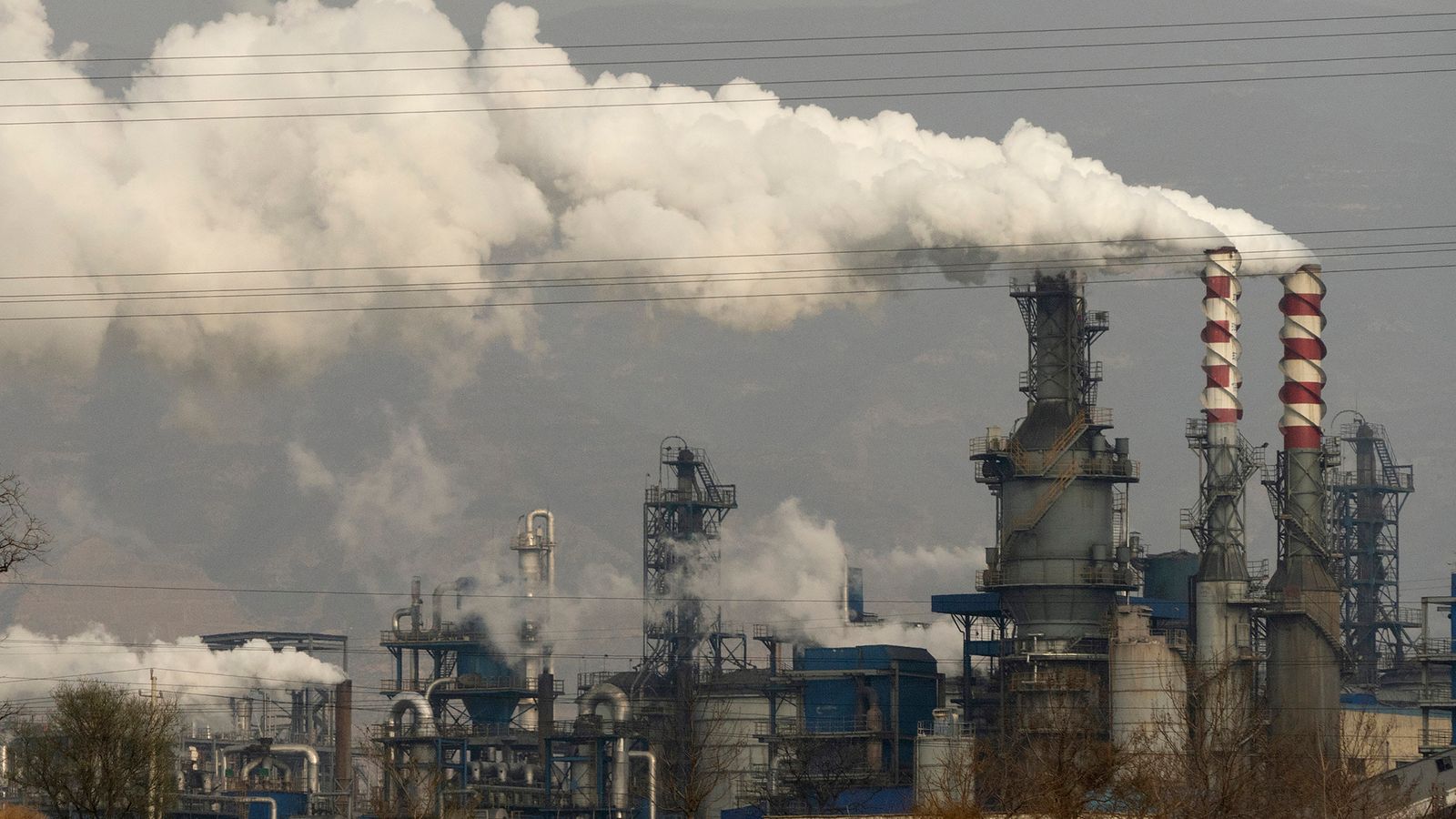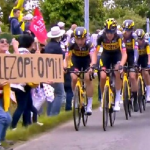Pledges to cut methane, coal and protect forests made at COP26 will reduce global warming by just a few tenths of a degree – with temperatures on course to be at least 2.4C higher by 2100, according to the first major assessment of commitments at the summit.
The analysis raises serious concerns about the conference’s primary objective to “keep 1.5 degrees alive”.
“While the wave of net zero targets appears like remarkable news, we can’t sit back and relax,” said Professor Niklas Hohne, of the Cologne-based New Climate Institute.
COP26 – latest from the summit
Please use Chrome browser for a more accessible video player
“All countries must urgently look at what more they can do.”
The Climate Action Tracker estimates that even with the pledges made in Glasgow, global greenhouse gas emissions in 2030 will still be around twice as high as the globally agreed 1.5C target for warming.
According to the Intergovernmental Panel on Climate Change, exceeding 1.5C of warming risks passing global tipping points and temperature extremes that will put significantly more of the world’s population at risk of dangerous climate change.
COP26: Chief scientific adviser Sir Patrick Vallance says 1.5C warming limit is ‘crucial’ and ‘non-negotiable’
COP26: Government gives £210m backing for mini nuclear reactors to hit net zero ‘more quickly’
COP26: Barack Obama might have injected star power, but climate summit still a long way from delivering success
The opening days of the Glasgow summit saw important carbon-cutting initiatives.
Please use Chrome browser for a more accessible video player
More than 100 countries committed to cut methane emissions by 30%, for example.
But the Climate Action Tracker analysis found that some of these commitments were already included in national plans to cut carbon lodged with the UN.
Remove such double-counting as well as commitments made on methane, trees and phasing out coal means they would have less impact on global warming than claimed.
Most of the promises made at COP26 are for longer term “net zero” targets. Take the world’s biggest emitters: China promising net zero by 2060, the US by 2050, and India’s recently announced target of 2070.
But the rate of global warming means we’ll be approaching 1.5C as soon as 2030, so near-term targets to cut emissions are what counts.
So far, few countries have published detailed plans of how they plan to get there.
“The vast majority of 2030 actions and targets are inconsistent with net zero goals: there’s a nearly one degree gap between government current policies and their net zero goals,” said Bill Hare, chief executive of Berlin-based Climate Analytics, which contributes to the Climate Action Tracker analysis.
“It’s all very well for leaders to claim they have a net zero target, but if they have no plans as to how to get there, and their 2030 targets are as low as so many of them are, then frankly, these net zero targets are just lip service to real climate action.
Subscribe to ClimateCast on Spotify, Apple Podcasts, or Spreaker
“Glasgow has a serious credibility gap,” he said.
The analysis considered a more optimistic scenario, in which countries carry out all the commitments in their national plans submitted to the UN process, as well as all the announcements made at the climate summit, on time, and in full. That reduced warming to 1.8C by 2100.
One thing that could make that far from perfect scenario look more credible would be agreement in Glasgow on the “rulebook” of the Paris Agreement.
A binding agreement would leave countries less wiggle-room to delay, or cheat their way out of living up to their existing carbon-cutting pledges, say analysts.
For full coverage of COP26, watch Climate Live on Sky channel 525.
Follow live coverage on web and app with our dedicated live blog.
Get all the latest stories, special reports and in-depth analysis at skynews.com/cop26






















